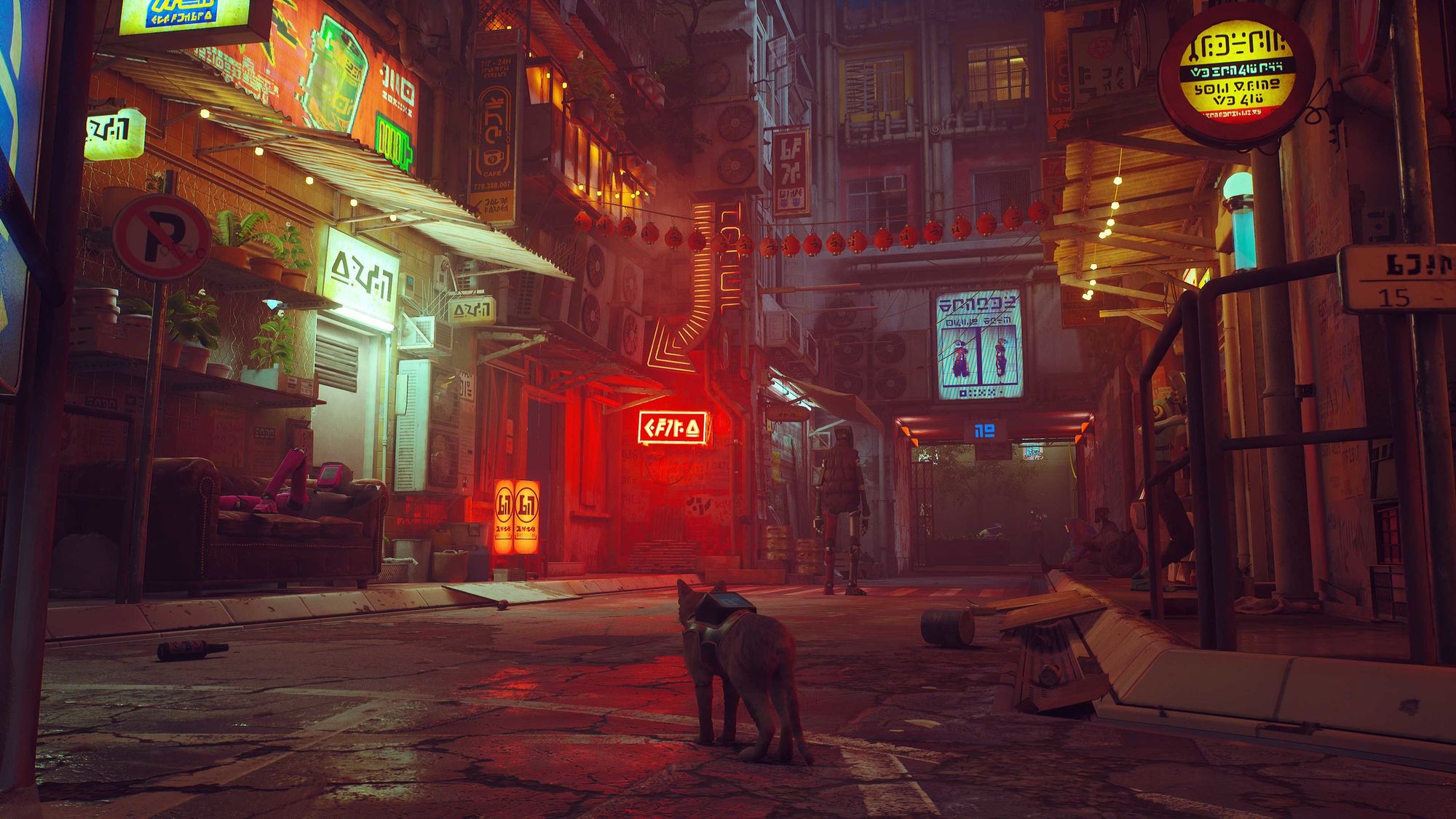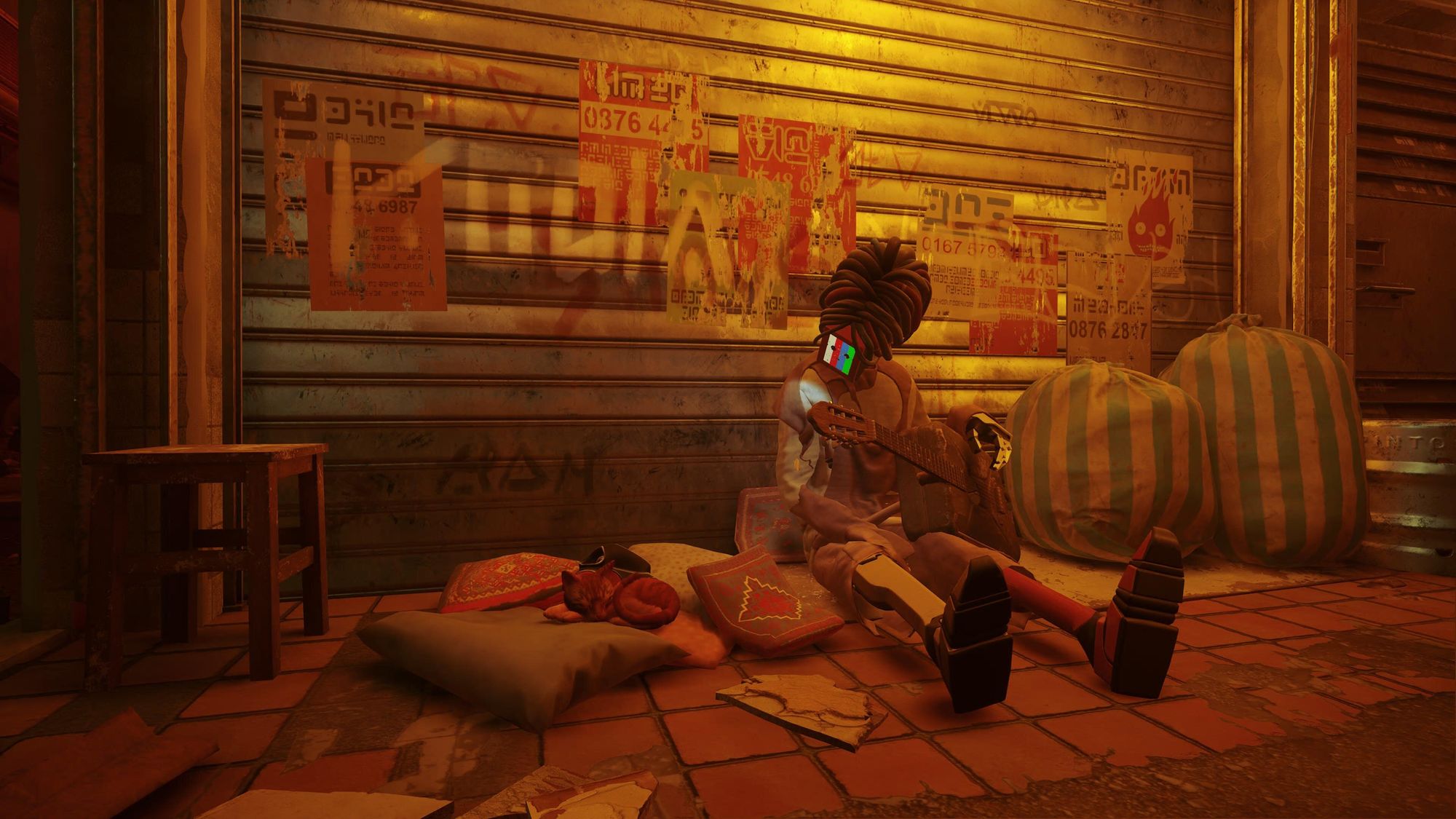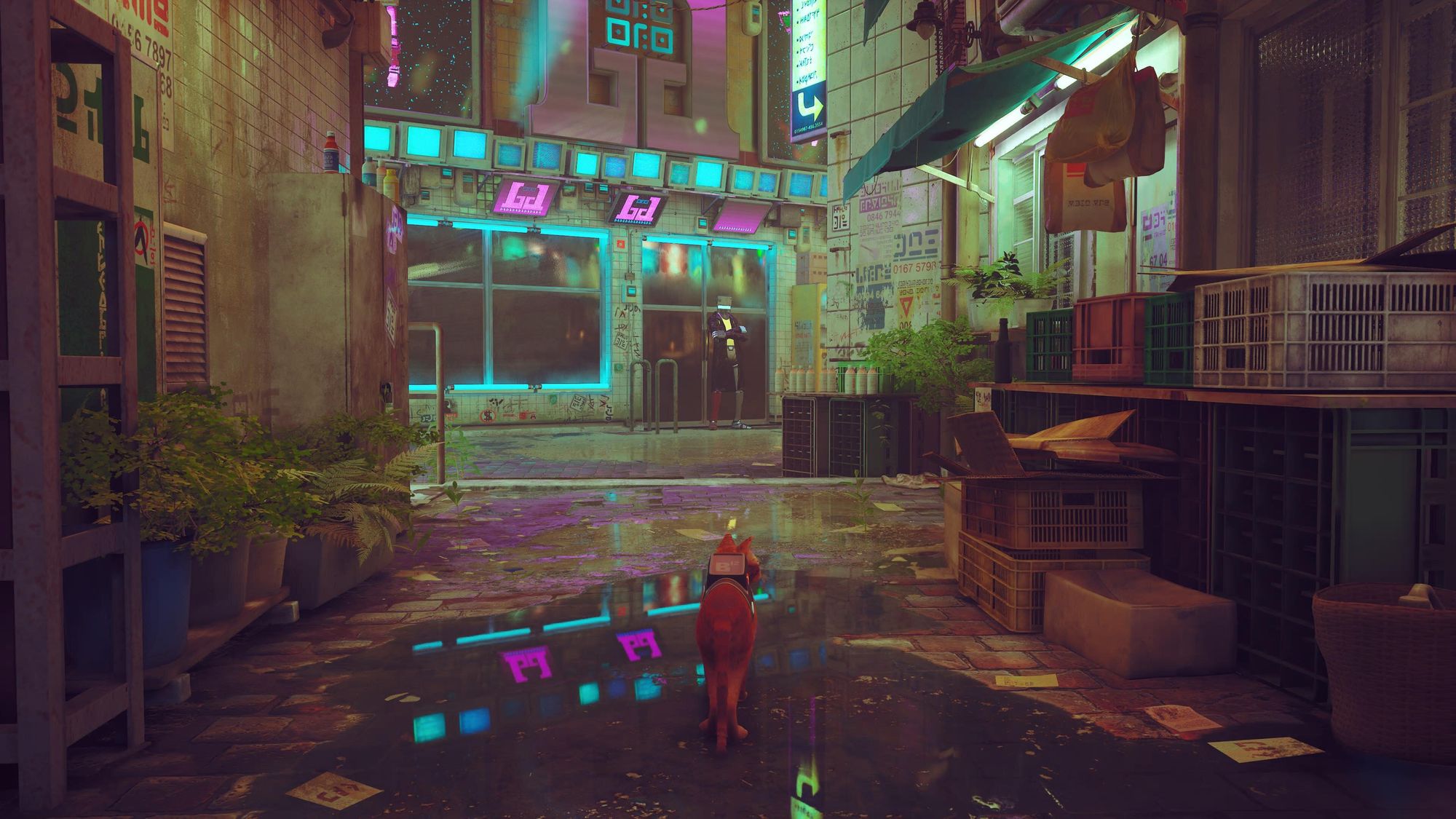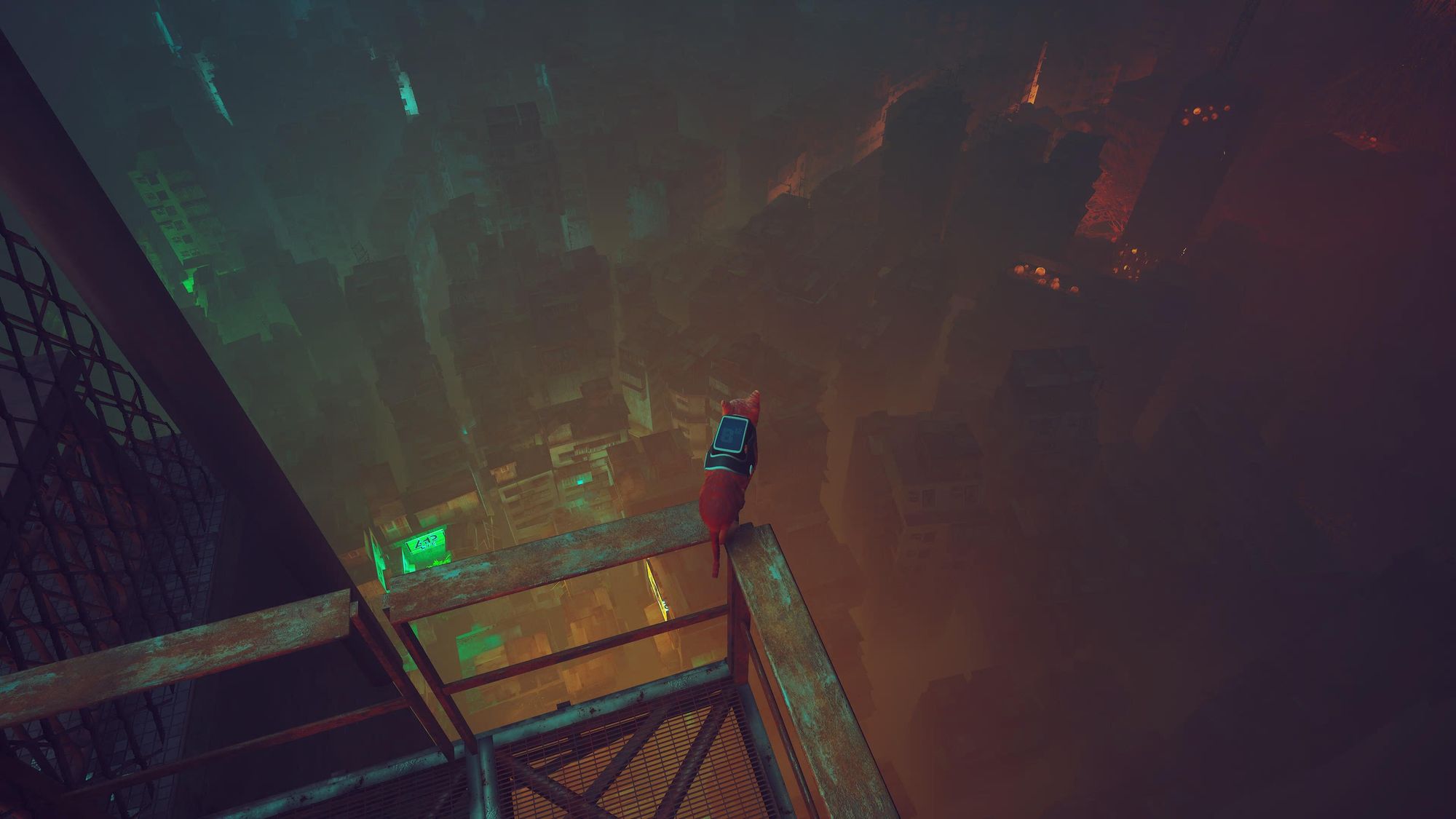Stray: Hope Beyond Humans
Is there purpose and worth in a life with no humans around?

In Jeff VanderMeer’s unusual novel Dead Astronauts, they present us with a stark look into an alternative future where animals have transcended to become magical beings, the needs of humans secondary to the life of the planet. There’s a punctuative paragraph in the book, where a fox endlessly repeats a mantra decrying its particular “usefulness” to the scientific humans:
"They brought me back. They killed me. They brought me back. They killed me. They brought me back. They killed me. They brought me back. They killed me. They brought me back. They killed me. They brought me back. They killed me."
It is only after the humans are gone that the fox can orient itself to a natural state and travel through a world free of secondary agendas.
Jeff VanderMeer has gone on the record describing his books as post-humanist, no surprise to any reader of the Southern Reach Trilogy or the tragic Borne has enjoyed his ecological revolutions and non-human perspectives. Exploring post-humanism often goes hand in hand with supporting its definitive opposite: a world without humans is one where non-human entities can thrive.

A Cat Without a Collar
In the opening hour of Stray, our lens is feral. Breed and background notwithstanding, this stray cat exists on the Outside, a lush paradise that’s dumping rain and free of any observable humans. Through a series of misfortunes, this cat loses its family and ends up on the inside of Walled City 99, a dystopian compound filled with cutesy robots called Companions, surviving helpers of a doomed and vacant race. What evidence might exist of a sudden disappearance not readily known to us—it’s likely that the humans have been dead and gone for some time.
Post-humanism, trans-humanism, and restorative ecology have been popular staples in video game narratives for some time, and often crop up in science fiction such as cyberpunk and naturepunk. Most recently, the wonderful Citizen Sleeper had players exploring a capitalist deep-space orbiting station as a non-human entity that was an echo of its former human self. NieR: Automata fully explores a future so far removed from humanity that we can only feel their echoes in the arts and structures that have miraculously survived. With non-human experiences, video games excel; as with any forced perspective medium, games have a penchant for transcendental artistic communication.
"...video games, by their very “nature” should allow us to play out versions of breaking away from anthropocentric idealism and experience what new modes of subjectivity and agency might entail."
Ragnhild Solberg
Stray effectively straddles the line of questions and answers. The game does not run long enough to explore thoroughly anything deeply philosophical but succeeds as a gorgeous vignette of wonder that fosters a brief relationship speaking to life beyond humans. For thousands of years, cats have existed alongside humanity. There are etchings of cats on ancient Egyptian walls, evidence of house cats in thousand-year-old diaries, and some of the earliest series of photographs are of our feline friends: Harry Pointer’s Brighton Cats. The internet’s obsession with cats is not new, and our companionship with these cute critters has continued to evolve. Stray imagines a world that transcends this relationship, where the domesticated feline continues on without its sapient counterpart.

Life Without Us
Without veering into ecofascistic advocation, it is easy to imagine life on earth flourishing without us. Our current systems are harming the planet at alarming speeds. Even though it’s still possible to right our course, fiction loves to imagine the soon-in-coming doom, the beauty of decrepit malls covered in foliage, and abandoned apartments sprawling with native species. This is, in part, what Stray imagines as well: they filled the world with creatures attempting to build a new society, with the scarcest resources available. The Companions—cheerful robots with computer-monitor heads—seem all too happy with seeking their own existences and cultures, creating bustling cities and docile neighborhoods. As the stray orange cat and his friend B12 experience all that Walled City 99 offers, they find evidence of a life that doesn’t need to be managed by the archaic grievances of a dead human race—there is life beyond the laws of humans.
In the game, B12 belabors the point that he’s a human being trapped in the metallic body of a floating robot. Whether this is true or some facet of Plato’s Cave is up to the player to judge, though with the loss of the robot it appears the possibility of returning humans has dwindled yet again. There doesn’t seem to be much to cry over here, however. Species go extinct each year and we do not hold parades for their dead. Human beings have an inflated sense of self-importance that is on display even when they are gone—how many players who played through Stray viewed the cat and its abilities beyond the lens of its house cat forebears? As with all things, humans perceive living objects according to human agendas. It is completely possible for us to understand the mentality of a non-human creature, to find out its behaviors and reasonings outside of human patterns. Our anthropocentrism continues to be both a philosophical and deductive downfall.
Video games like Stray are refreshing courses in possibility because it’s never been more important than now to imagine life beyond our limited perspectives. We are considerably selfish creatures that make even the most inane decisions based entirely on fear. Instead of operating on need, hunger, or resource, human beings continue to build and reinforce systems that brutalize other human beings, creating societal classes or outright killing those who do not conform to the rigidity of our views.
In Stray, the Companions display evidence of leftover human factors no doubt influenced by their systems by long-dead engineers (some Companions run stores, make deliveries, and even exist as members of the police). They transplanted the conscious mimetic evidence of the human condition in these Companions, and those that seem the most at peace with this new world are the ones living in smaller neighborhoods and hamlets. Harmony is possible within the natural hierarchies of the animal world, free of subjugation and for-profit industry.

Breaking the Status Quo
Fictional musings on post-humanism go as far back as Mary Shelley’s Frankenstein, where a nameless composite monster angrily stomps through a reality that it was forcibly born into. Frankenstein continues to be analogous to science fiction and is the first artificial intelligence story that captured the perverse godhood of ripping a mind out of the ether and planting it within a foreign host. Whether it is our intention, this is what humanity does with its building blocks of robotics and fur—every Companion is a crafted entity for the service of humans, every house cat a bauble at the whims and pleasure of its human owner. While we can see aspects of these relationships as examples of commensalism, it’s difficult to measure our relationship with animals by choice. Where the cat and its companions exist on the Outside free of responsibility, upon entering the Walled City the cat becomes forcibly equipped with a harness and commanded to go on a journey in service to its long-dead masters—devoid of reward, justification, or reason. The very course of Stray is in command to both human perception and human need.
Stray does not paint itself by its bleakness. There is actually quite a bit within the game that can be read as hopeful, but only from the perspective of the human that is playing it. The journey is rife with dangers: there are out-of-control Zurks (once crafted to consume bio-waste but now exist as a terrifying and destructive alien species), bad-faith Companions, and environmental harms. Again, the entities in Stray must contend with the choice of a race that no longer even exists, because its reach is so vast and its decisions so harmful. It is only in Stray’s last moments we see evidence of what might exist beyond these choices, and wonder if what the cat has done is salvation or doom. If there is anything to be cheered for in Stray, it is not the harmony of enlightening a city that may have once protected humans from a terrifying plague, but of reuniting the cat with his family on the Outside.
"You’re talking about a kind of propaganda that’s long suggested that animal life is not a serious area for discussion. Denying animals' voices is a way of making animals and the plight of animals invisible."
Jeff VanderMeer
Fiction such as Stray or Dead Astronauts affords us a comprehensive and meditative view into what awaits beyond, and the necessity of animal perspective in our daily lives. Divorced from ego and perspective, humans can appreciate the philosophy and biology of things that exist without us by simply acknowledging that we are not the center of the universe. It is in this appreciation of other living things we can firmly accept that our role on this planet is often not symbiotic, but that we are harming it in exchange for our own valuable livelihoods. The diegetic nature of video games like Stray grant us an opportunity to examine the lives of living creatures, reinforced by the infinite boundary of fiction.
Perhaps it’s time to step outside of our own bodies and consider the inherent worth of living organisms, regardless of whether they fulfill some human task.
